
Poland history and facts
in brief
Black Madonna of Czestochowa
Czestochowa
Excerpted from Wikipedia, the free encyclopedia.
Czestochowa is a city in south Poland on the
Warta River with 248,894 inhabitants (2004).
Situated in the Silesian Voivodship (since 1999), previously
capital of Czestochowa Voivodship (1975-1998).
This town is known for the famous Paulite monastery
of Jasna Gˇra that is the home of the Black Madonna
painting, a shrine of the Virgin Mary.
Every year, thousands of pilgrims from all over the
world come to Czestochowa to see it.
There is also a Lusatian culture excavation site and
museum in the city and ruins of a medieval castle in
Olsztyn, approximately 15 kilometres (ca. 10 mi.) from
the city centre.
Voivodship: Silesian
Municipal government: Rada miasta Czestochowy
Area: 160 km▓
Population: 248,894 (2004)
- density 1 597/km▓
Founded: 11th century
City rights: after 1370
Latitude: 19░07'E
Longitude: 50░48'N
Area code: +48 34
Car plates: SC
Twin towns: Altlotting, Fatima, Loreto, Lourdes,
Pforzheim, Rezekne, South Bend, Siauliai
Municipal Website:
(http://www.czestochowa.um.gov.pl/)
The name of Czestochowa means Czestoch's place
and comes from a personal name of Czestoch mentioned
in the mediaeval documents also as Czestobor and Czestomir.
The original name was mentioned as Czestochowa, spelled
Czanstochowa in 1220, or Czestochow in 1382 and 1558.
A part of today's city called Czestochˇwka was a separate
municipality mentioned in 14th century as the Old Czestochowa
(Antiquo Czanstochowa, 1382) and Czestochˇwka in 1470-80.
History
The village of Czestochowa was founded in 13th century.
Before 1377 it received a town charter, which was later
changed to the Magdeburg Law in 1502.
In the 17th century the local monastery was turned into
a fortress, which was one of the pockets of Polish resistance
against the Swedish armies during The Deluge in 1655.
After the Third Partition of Poland it was annexed by
Prussia and incorporated into the Neue Schlesien province.
During the Napoleonic Wars, in 1807 it became part of
the Duchy of Warsaw and since 1815 the Kingdom of Poland.
This started a period of fast growth of the city.
In 1819 renown military architect Jan Bernhard planned
and started the construction of Aleja Panny Marii -
the Lady Mary Avenue, which currently is the main axis
of the modern city.
The two existing towns of Czestochowa and Czestochˇwka
(the latter received the city rights in 1717 as Nowa
Czestochowa) were finally merged in 1826.
In 1846 the Warsaw-Vienna railway line was opened, linking
the city with the rest of Europe.
After 1870 iron ore started to be developed in the area,
which gave a boost to the local industry.
Among the most notable investments of the epoch was
the Huta Czestochowa steel mill built by Bernard Hantke,
as well as several weaveries and paper factories.
During the World War I the town got under German occupation,
and in 1918 it became a part of the newly-reborn Republic
of Poland.
The new state acquired large deposits of good iron ore
in Silesia and the mines in Czestochowa became inefficient
and soon were closed.
This brought the period of prosperity to an end.
At the same time a bishopry was relocated to the city
in 1925.
After the Polish Defence War of 1939 the town was annexed
by Nazi Germany, renamed to Tschenstochau and incorporated
into the General Government.
During the World War II approximately 40,000 of Czestochowa's
Jews were murdered by the Germans, almost the entire
Jewish community living there.
After the war Czestochowa was returned to Poland.
Due to communist idea of fast industrialisation, the
inefficient steel mill was significantly expanded and
named after Boleslaw Bierut.
This, combined with the growing tourist movement, led
to yet another period of fast city growth, concluded
in 1975 with the creation of a separate Czestochowa
Voivodship.
Currently the city is one of the main tourist attractions
of the area and is sometimes called the little Nuremberg
because of the number of souvenir shops and the historical
monuments.
It also attracts hundreds of thousands of tourists and
pilgrims every year.
External links

This page was retrieved and condensed from
(http://en.wikipedia.org/wiki/Czestochowa) in July,
2005
All text is available under the terms of the GNU Free
Documentation License.

Hui Chin and I visited
Czestochowa during our 2005 trip in Europe.
During our visit the township of Czestochowa, the Jasna
Gora Monastery and especially the Black Madonna Shrine
was full of peolpe, old and young , local and visitor.
Many people came to attend the special Masses In Memory
of the Late Pope John Paul II.

You can click on
these photos for an enlargement
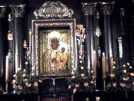 |
 |
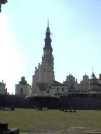 |
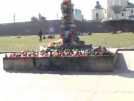 |
| Black Madonn Shrine |
Black Madonn Shrine |
Jasna Gora Shrine |
Candles for the late Pope
John Paul II |
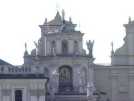 |
 |
 |
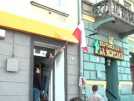 |
| Jasna Gora Shrine |
Jasna Gora Shrine |
Candles for the late Pope
John Paul II |
Czestochowa |
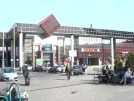 |
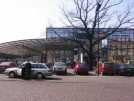 |
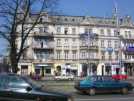 |
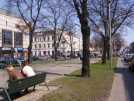 |
| Czestochowa |
Czestochowa |
Czestochowa |
Czestochowa |
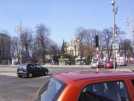 |
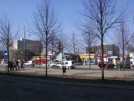 |
 |
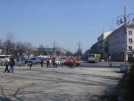 |
| Czestochowa |
Czestochowa |
Jasna Gora Shrine |
Czestochowa |
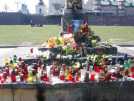 |
 |
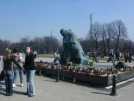 |
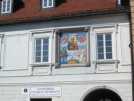 |
| More candles for the late
Pope John Paul II |
Jasna Gora Monastery |
Czestochowa |
Jasna Gora Monastery |
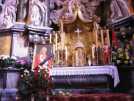 |
 |
| Black Madonn Shrine |
Black Madonn Shrine |
Czestochowa Buses
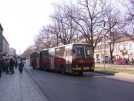 |
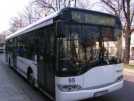 |
| Czestochowa Buses |
Czestochowa Buses |
Czestochowa Trams
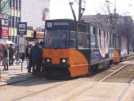 |
| Czestochowa Trams |
Czestochowa Trains
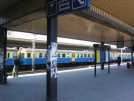 |
 |
 |
| Czestochowa trains |
Czestochowa trains |
Czestochowa trains |
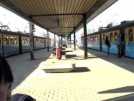 |
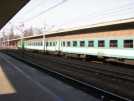 |
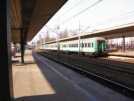 |
| Czestochowa trains |
Czestochowa trains |
Czestochowa trains |
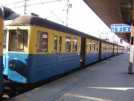 |
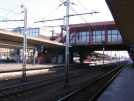 |
 |
| Czestochowa trains |
Czestochowa trains |
Czestochowa trains |

Site
Index
Back to Top
Photos Index
Thanks for coming, I hope you
have enjoyed it, will recommend
it to your friends, and will come
back later to see my site developing
and expanding.
I'm trying to make my pages
enjoyable and trouble free for everyone,
please let me know of any mistakes
or trouble with links, so I can
fix any problem as soon as possible.
These pages are best viewed with monitor
resolution set at 640x480 and kept simple
on purpose so everyone can enjoy them
across all media and platforms.
Thank you.
You can e-mail me at
Webmaster

|